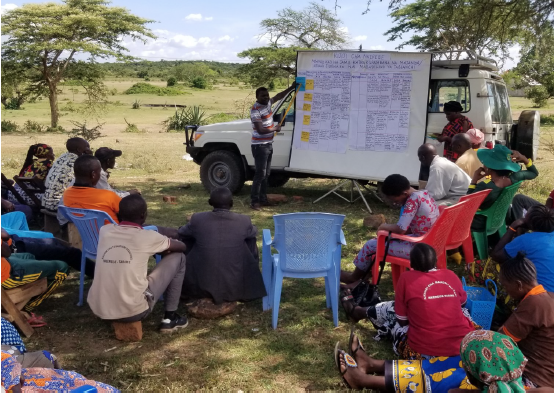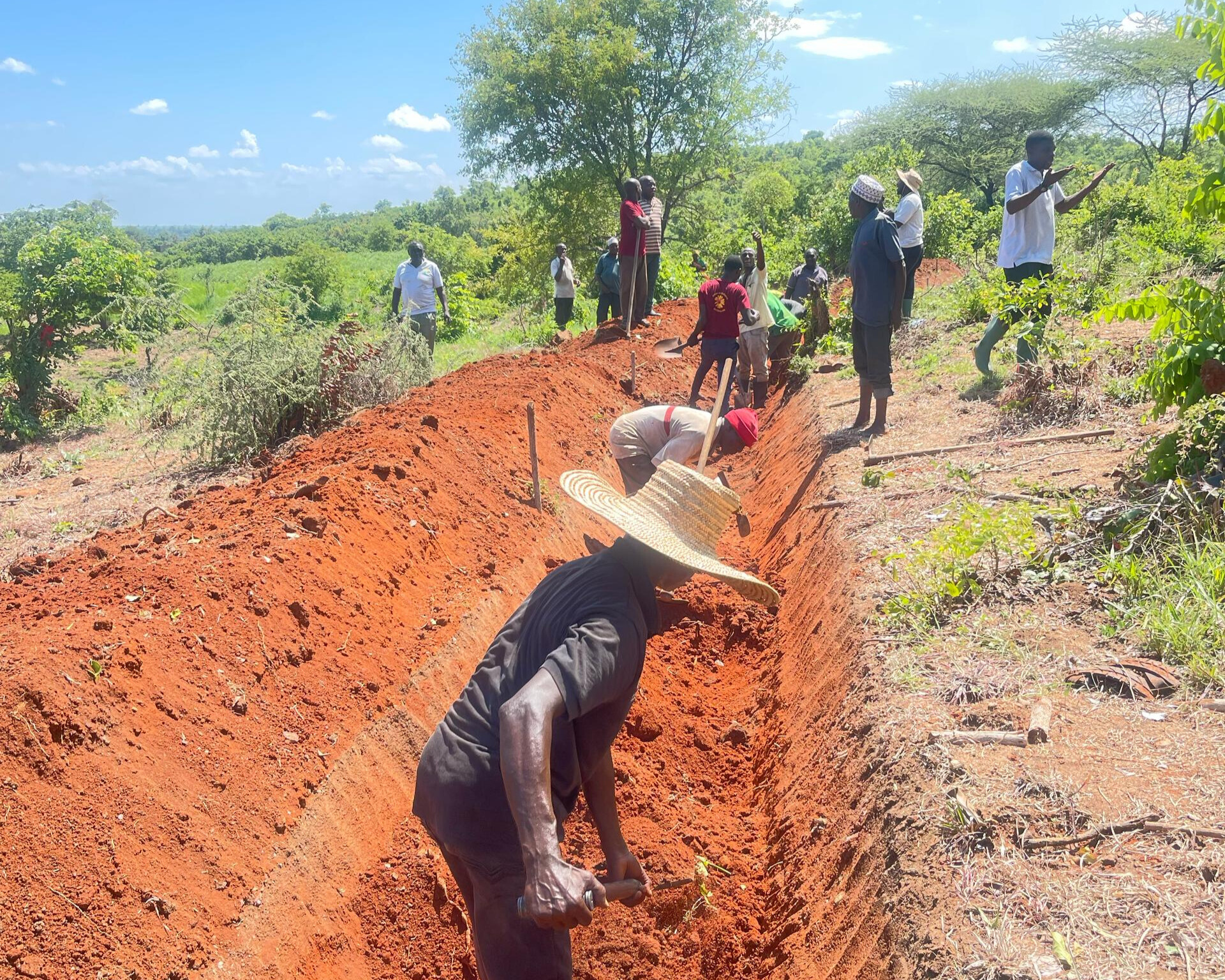Community fights climate change

Why planting trees is one of the strategies to face the challenges and effects of climate change and how the community of Mkindo, in the north of Morogoro region, is doing it.
Drought and hot temperatures on the one side, erratic rainfalls and floods on the other are typical characteristics of the Mvomero District in the north of the Morogoro region. The primary victims of these extreme weather events and climate conditions are rural households with farms, cattle, and pasturelands, which form the majority of the population of this area. But the people of Mkindo, where the main economic activities include farming different crops such as rice, corn, cassava, peas, vegetables, and bananas, as well as livestock farming, do not want to accept the situation. Especially as drought, floods, and unpredictable rainfalls lead to soil erosion, crop devastation, and the loss of cattle, and therefore have a substantial impact on the community's living conditions in Mkindo.

There have been several attempts by the Government and some stakeholders to regulate it. But because the process lacked the community's support, efforts have stopped, and as a result of the combined consequences, the situation worsened every year. With the kind support of Bread for the World, a global development agency of the protestant churches in Germany, Sustainable Agriculture Tanzania (SAT), started to implement the Participatory Climate Risk Assessment Hub (PCRAH) Project to deal with the effects of climate change. By the beginning of 2022, SAT began to carry out the project activities in close cooperation with the communities at Mkindo village using the Participatory Assessment of Climate and Disaster Risks (PACDR) tool – a tool that intends to help communities raise awareness, assess their climate change and disaster risks and finally develop adaptation strategies.
Climate change and human activities
SAT conducted field facilitation at the community level with Mkindo 26 village representatives on the PACDR process as the initial stage; through this process, it became clear that temperature increases, drought, heavy rainfalls, and floods are hazards brought on by climate change that significantly impact the socioeconomic development of the village and region. Through the facilitation of the 9 PACDR exercises, the community could develop an action plan comprising suitable climate change adaptation strategies based on their local environment.
SAT trained community representatives at Farmer Training Centre (FTC) on tree nurseries establishment and pasture farms establishment as two suitable adaptation strategies from the action plan that are crucial now for the Mkindo community.
Some of the community members also have started to deduce environmentally unfriendly human activities out of the knowledge they got, such as cutting down trees to burn charcoal and wood, conducting agricultural activities in forest reserves, and mining minerals close to water sources.


"Climate change is real and is affecting us," says Shabani Juma, a small-scale farmer in Mkindo village. He sums up, "Change in weather patterns, unpredictable rainfalls, high temperatures, and drought are vivid at Mkindo, but with small steps like restricting the cutting of trees, avoiding human activities near water sources, and planting trees, we can fight it."
Shabani Juma was one of the farmers from Mkindo village who received training at the Farmer Training Centre (FTC) on suitable climate change adaptation strategies. He has helped in facilitating his fellow farmers at Mkindo village about suitable climate change adaptation strategies.
One of the ideas is to plant environmentally appropriate trees for pasture areas and mixed farming. For that, the community has established a tree nursery with 10,039 seedlings. So now species like Afzelia quanzensis-Mkongo, Khaya Anthotheca-Mkangazi, Faidherbia Albida-Mgunga, Acrocarpus fraxinifolius-Mti kivuli, Cedrella Odorata-Msedelea, and Gliricidia Seplum-Grilicidia are propagated, cultivated and raised until they are ready to be permanently planted.

The PACDR tool helps to facilitate the assessment of climate change hazards, and it is effective since it involves the community. This is essential, as many challenges concerning climate change and its effect can only be solved at a community level through the strategies identified.

The Project is kindly supported by Bread for the World







